Complete energy autonomy or how to survive with solar panels in the outback (part 6. Summer Resident Edition)
Looking at Yandex.Maps on Friday night, it is safe to say that the holiday season has begun. On the eve of the May holidays, this is felt particularly acutely. And in the country the main thing is what? No, not seedlings and neighbor lawnmower. At the cottage, the main thing is rest. This peace will help to ensure a well-planned power grid, reserved for network breakdowns or autonomous in general. In this article, I, as promised, will review three of my solar controllers, and in the second half I will answer a lot of questions that have accumulated over 6 articles. I answered some questions in the comments, I promised to tell you about something later. The most important thing is that in this article you will find answers to the question: “How to make electricity so that it is?” And not to return to this point.

')
In the previous part I told you what the MPPT controller is better compared to cheap PWM. Three solar controllers have accumulated in my own technopark, without which an autonomous or backup power system with solar panels simply will not work. The controller is responsible for the conservation of energy from solar panels in batteries.
So, I have on hand (in order of increasing power):
1. Epsolar Tracer MPPT 4210RN - 17 450 r
2. MPPSolar PCM60X ~ 20 000 r
3. ECO Energy MPPT Pro 200/100 - 38 900 r
Before using experience I will give brief technical characteristics:
It should be noted that the power is set algebraically, although the actual voltage for a 12V battery in the normal state is 12.7 V, in the maintenance mode 13.4-13.7 V, and in charge mode - up to 14.2 V. That is, the actual power controllers will grow by about 10-18%.
And if we compare the controllers for the voltage of the battery assembly of 24V, then it turns out that the most affordable Epsolar can digest up to 960 W of energy, and the most powerful ECO Energy - 2400 W. In price, they differ about twice, and the power at this voltage is almost two and a half. If we compare the maximum power that these two controllers can process, then the picture changes noticeably: 960W for Epsolar versus 9600 W for ECO Energy. That is, while maintaining the price difference by 2 times, the difference in maximum power is 1 order (10x)!
In simple words: If the system is planned with the prospect of growth, then it is economically expedient to immediately acquire a more powerful controller.
Operating experience
I bought controllers for the growth of power, so the chronology will not be broken.
Epsolar Tracer MPPT 4210RN

Refers to budget systems and has no communication with the computer, but there is a remote display, which is an option and is sold separately. It also contains buttons for setting the basic parameters. Without it, everything will work automatically, but it is rather interesting to see how much energy comes into the house from solar panels. This monitor costs about $ 30 separately on eBay. It is noteworthy that the display is connected with a normal twisted pair, and the experiment on connecting a 10 meter homemade cable was a success. It works silently, passive cooling, takes up little space, at maximum power the radiator heats up noticeably. Definitely a good budget option when the dollar was noticeably lower and there was no need to increase the capacity of the batteries. Russian craftsmen wrote software that intercepts the data transmitted to the monitor, and displays them on the computer.
Pros: Remote display, connected and working - no settings are required
Minuses: Lack of factory software for control from a computer, capacitors and coils are filled with solid composite, which reduces maintainability, the display is sold separately (there is a complete set with a display, but more expensive), difficulty with warranty service
Look inside


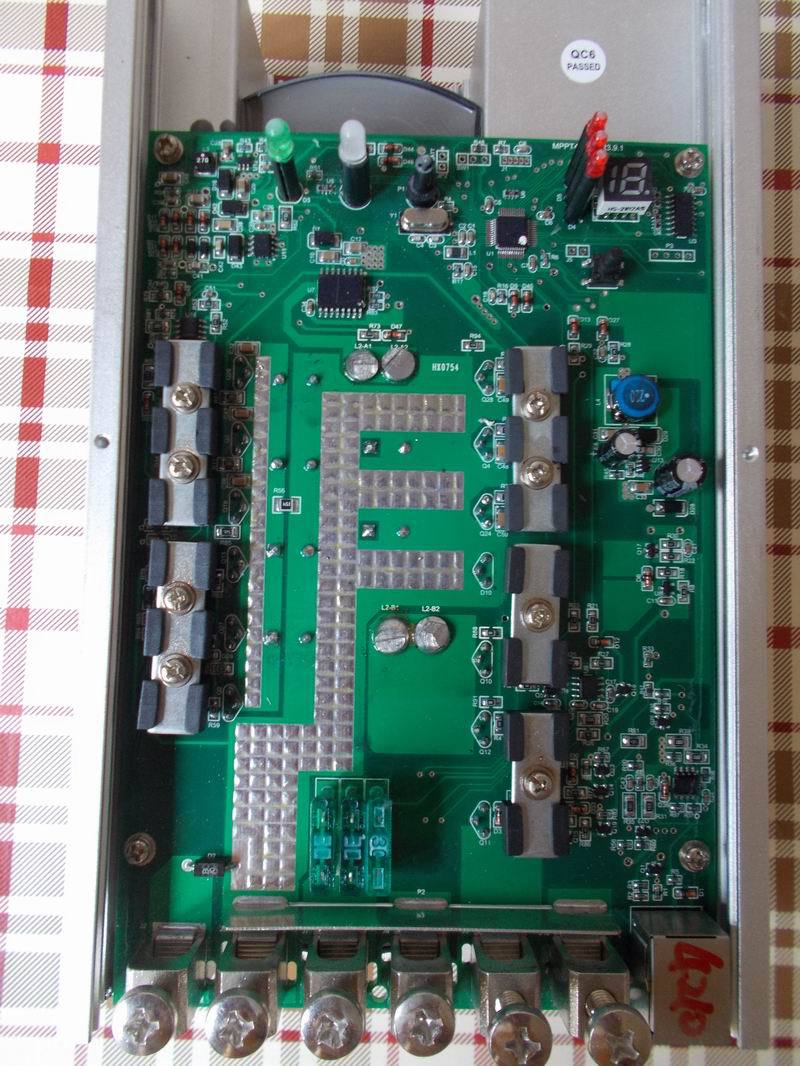





MPPSolar PCM60X

The controller is made in a metal case. To connect you need to remove the cover to get to the terminals. It is possible to connect an external temperature sensor to compensate for the charging voltage, depending on the temperature of the batteries. A built-in backlit display displays several options. There is no choice of settings through the display, but it is possible to connect to a computer. There is the ability to update the firmware and tweaks through proprietary software. You can also remove the characteristics and history with the help of proprietary software. The connection to the solar batteries is carried out by the controller with the help of a powerful relay - at the beginning of work a noticeable click is heard. The use of mechanics often reduces the reliability of the device. In addition, an unpleasant glitch is noticed: if you turn on a powerful load, the controller reacts to a voltage drop on the batteries by disconnecting the SP. That is, when you need a powerful pumping of energy, it is temporarily turned off. After 5-10 seconds, it connects again and starts pumping up, but the peak of consumption falls on the batteries.
Pros: various operating voltages on batteries, up to 48 V; remote temperature sensor, built-in display, communication with a computer, firmware update
Cons: Switching solar batteries through a relay, glitch with disconnection of the joint venture when the load is switched on, difficulty with warranty service
Look inside



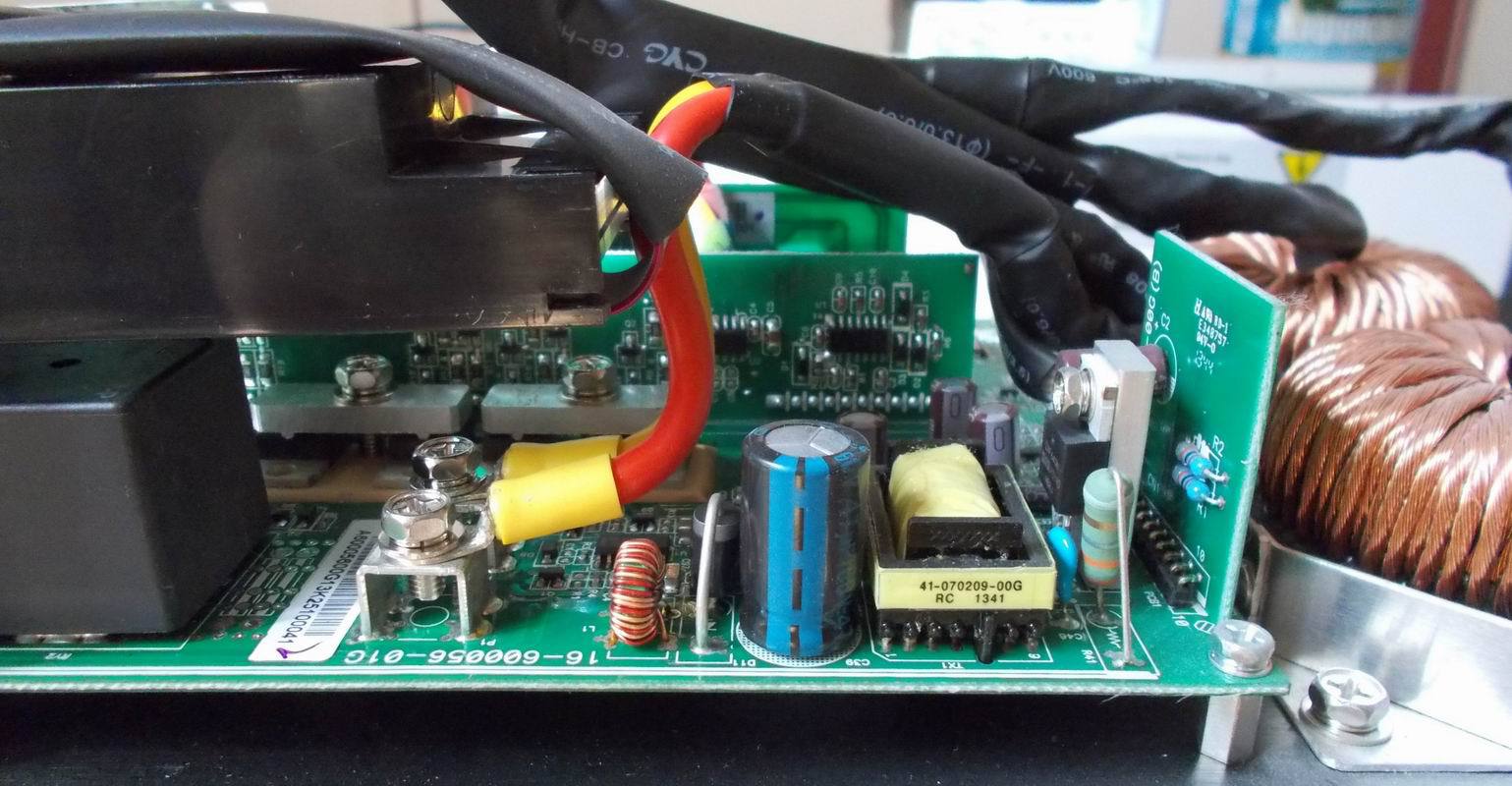






ECO Energy MPPT Pro 200/100

The controller of domestic development and assembly. A wide range of supported voltages - from 12 to 96 volts, that is, from the initial to the professional high-power systems. The maximum power of the connected batteries is about 10 kW! (in garden partnerships, they often emit 5 kW to a country house) The voltage from solar panels can be up to 200 V, which allows to significantly save on the thickness of the wires and reduce the parasitic losses of precious energy. Built-in display with backlight and communication with the user in Russian. A large number of settings for any type of battery (you can even set the most exotic settings yourself). Connecting to the network, connecting to a computer, updating firmware, which are released regularly, including the wishes of users (Chinese manufacturers rarely make contact, if this is support, not sales). Connecting to a hybrid inverter and switching to a network of devices: an inverter, a SAP (benzo \ diesel generator), BMS (battery balancing control), another solar \ wind controller. The ability to instantly pump energy "on demand" with any inverter, whether it is the same manufacturer or another (for this you will need to add a current-measuring ring). Metal housing, radiators on the sides (in previous controllers, radiators are made on the back wall). Inside, everything is done on three boards that can be replaced in several movements - maintainability and accessibility are good. The potential to turn a solar controller into a wind turbine controller by adding a power module and heating elements to reset excess energy.
Pros: the whole range of operating voltages on batteries from 12 to 96 V, support for various types of batteries, high input voltage from the joint venture, high battery charging current (up to 100 A), menu in Russian, networking of several devices, pumping energy from native and foreign controller, regular fresh firmware, communication with computer, three programmable relays for load control or other purposes.
Cons: Wiring requires a long screwdriver. This is noticeable on video connections in the past material . Domestic product I would like to have cheaper. In fairness it should be noted that the controllers of such power for similar money can not be found.
Look inside

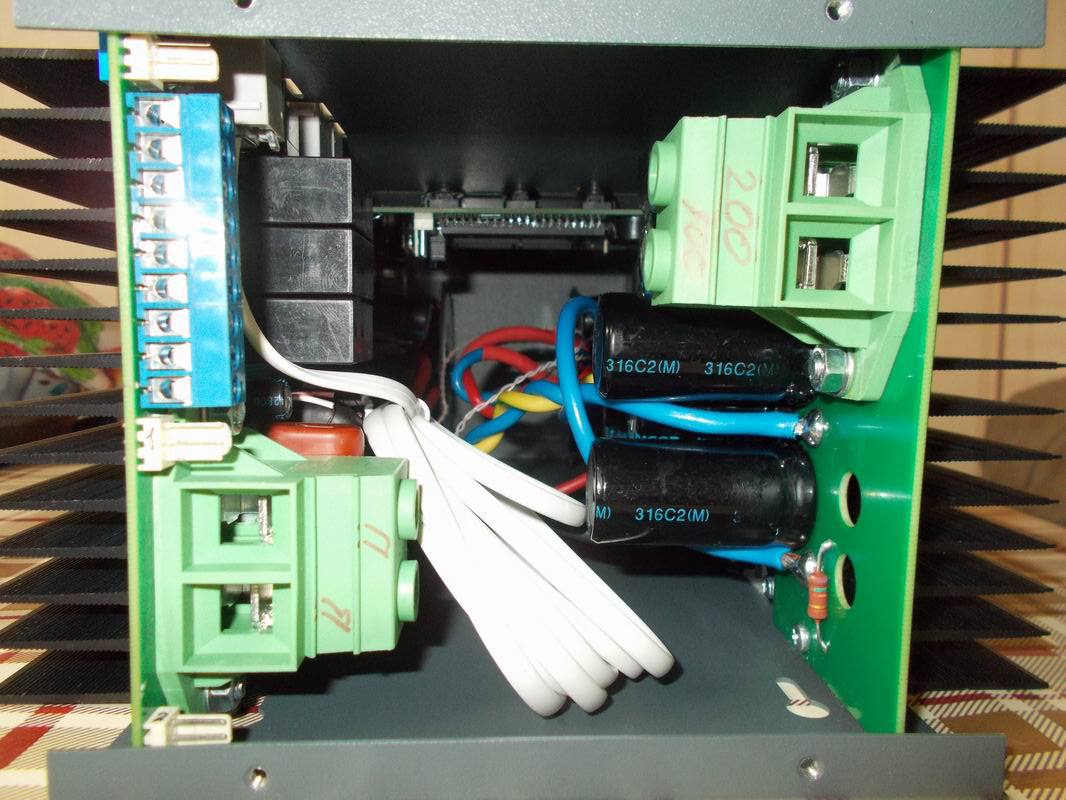
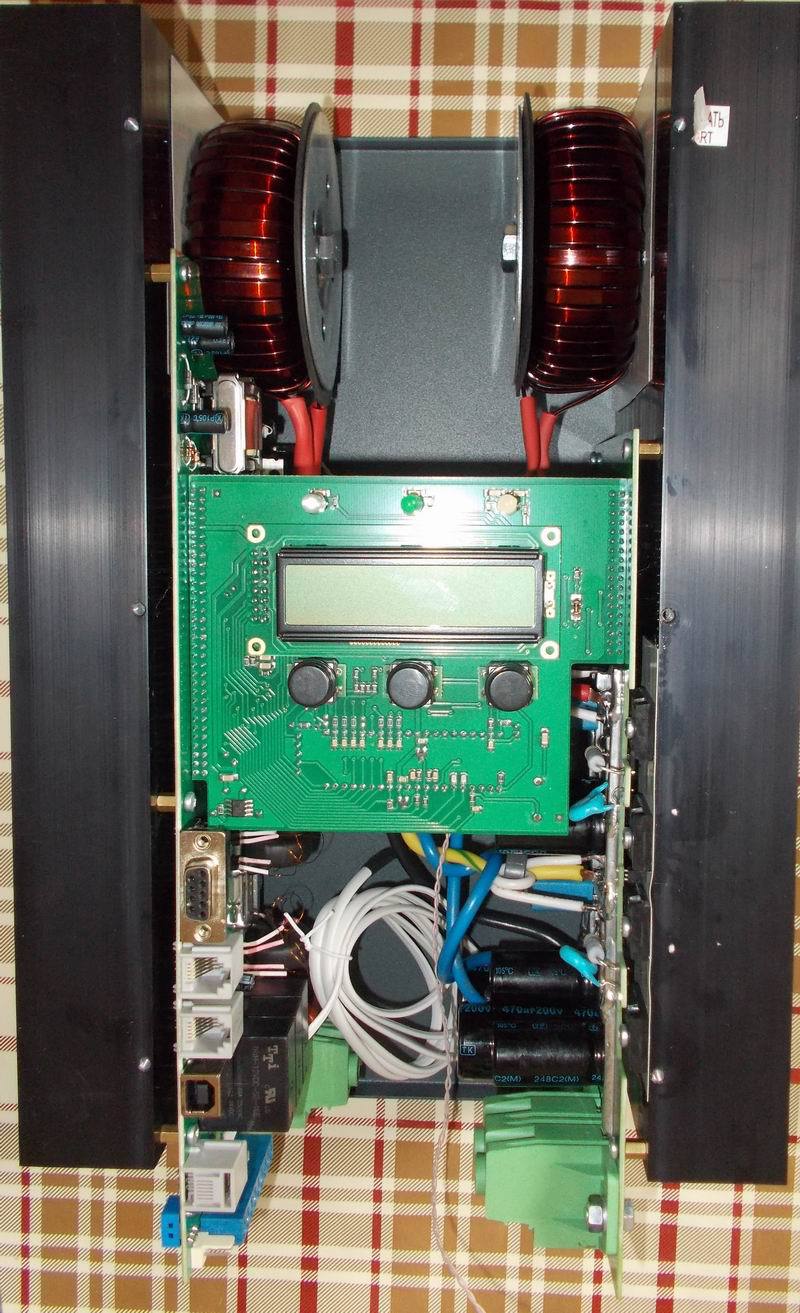
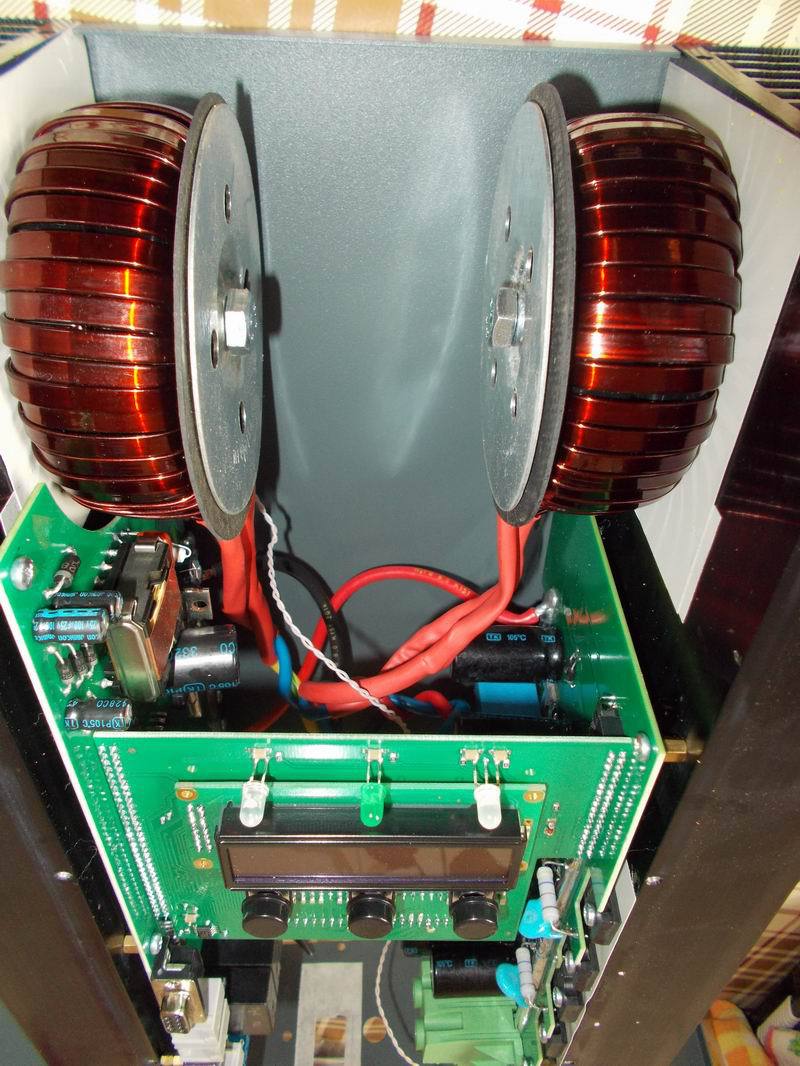
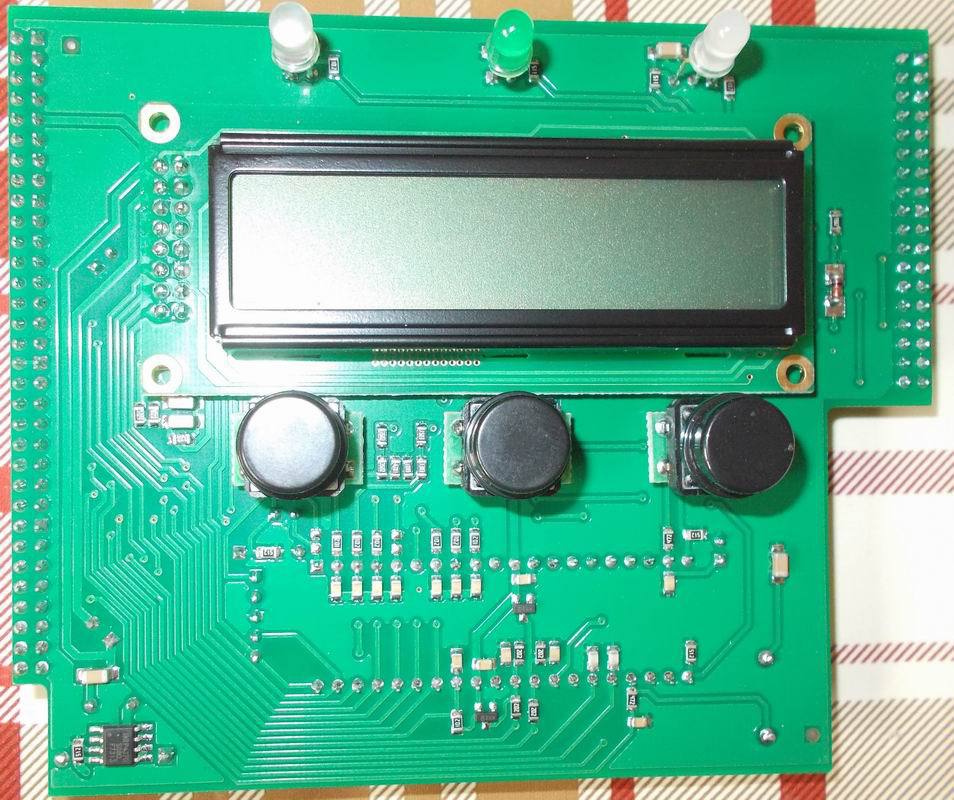



Bottom line: I want to save money and you are sure that you will never deliver more than 1 kW of solar panels, and are ready to take a risk with the service - look in the direction of the Epsolar Tracer MPPT 4210RN. You want a reliable system with a subsequent increase in the power of solar cells, careful attitude to batteries (instant pumping and fine tuning of the charge) and a stable warranty service - take ECO MPPT Pro 200/100 Energy. MPPSolar produces good controllers, but the presence of a mechanical relay in the wiring diagram clearly reduces the reliability. All manufacturers have simpler models, so you can choose the required power based on preferences and requirements for your power system.
Part 2. Answers on questions
Question: Is it worth doing alternative energy?
Answer: I answered unequivocally for myself - YES. And now the rationale. If there is no electricity, it is unstable, and you constantly live in the house, then there are a number of critical services / devices that require constant power supply - these are boilers, especially thin electronics, incubators. Traveling option on a car or a house on wheels, when parking is several days - one or two solar batteries solve the problem of a dead battery in a car for recharging gadgets or powering a refrigerator (compact, for cooling drinks or kebabs).
Question: I would like to drink
Answer: If you want to save, then it is enough to buy a generator, an inverter and batteries. By tarahteniem generator in 3-4 hours you can provide yourself the next day frost in the refrigerator and the laptop. I want complete silence - replace the generator with \ add solar panels and a solar controller. The capacity of the batteries and the power of the inverter are selected based on the list of used equipment.
Question: What is the savings from using a hybrid inverter?
Answer: If a house typically consumes about 5 kWh per day in the summer, and solar panels (my 800W assembly) brings 4 kW per day, then the savings will be 80% of the total bill. In winter less due to the rare sun.
Question: Which is better: a wind turbine or solar panels?
Answer: For full autonomy - both. During the day there is the sun, at night the wind is more often. Also, the choice of the source of autonomous energy depends on the terrain features, the latitude of the terrain and the required power. The electricity grid is the cheapest, but it is not available everywhere. The wind turbine requires systematic maintenance and has a certain resource of operating time. It is favorable to put a windmill in coastal sea areas with a constant good wind or in steppes. In other cases, solar panels win many times, since they have no moving parts, do not require maintenance and have a service life of at least 25 years.
Question: Is it possible to sell electricity from solar panels to the network?
Answer: In Russia, to a private person, no. You can put a counter that can spin in both directions and then twist the meter readings, when energy is transmitted to the network. It is dangerous that they can be caught in such a twisting, and this can lead to serious fines. Also, only one of the meters manufactured in the Russian Federation can accurately wind in the opposite direction - others, in any direction of current, are considered a plus.
Question: What is the cost of entry into the solar energy?
Answer: If you take the cheapest and lowest quality components and rely on the work of the refrigerator and TV, you should rely on 25-30 thousand. If you want to live in comfort during the warm season, then it is worth laying at least 100-120 thousand.
PS What other topics of autonomy or energy are interesting to Habra? Would you like to see the community build a “smart home” not on the basis of ready-made solutions that answer with simplicity (not always) mastering, but are absolutely not humane to the wallet, but with the use of dissimilar controllers and devices? Do you want more practice in mastering the automation of home processes, or is it better to focus on the theoretical arrangement system (energy, intellectually) of your home so that this technique can be transferred to any home?
Source: https://habr.com/ru/post/256727/
All Articles